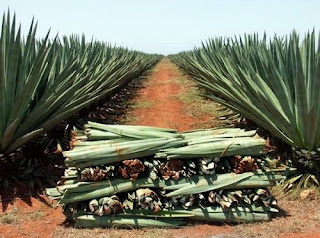Nylon Fiber
 FTC(Federal Trade Commission) Definition-A manufactured fiber in which the fiber forming substance is a long-chain synthetic polyamide in which less than 85% of the amide-linkages are attached directly (-CO-NH-) to two aliphatic groups. It was first synthetic true fiber, produced by "Dupont Company" on 28 February, 1935.
FTC(Federal Trade Commission) Definition-A manufactured fiber in which the fiber forming substance is a long-chain synthetic polyamide in which less than 85% of the amide-linkages are attached directly (-CO-NH-) to two aliphatic groups. It was first synthetic true fiber, produced by "Dupont Company" on 28 February, 1935.
Raw Materials of Nylon 6, 6
 FTC(Federal Trade Commission) Definition-A manufactured fiber in which the fiber forming substance is a long-chain synthetic polyamide in which less than 85% of the amide-linkages are attached directly (-CO-NH-) to two aliphatic groups. It was first synthetic true fiber, produced by "Dupont Company" on 28 February, 1935.
FTC(Federal Trade Commission) Definition-A manufactured fiber in which the fiber forming substance is a long-chain synthetic polyamide in which less than 85% of the amide-linkages are attached directly (-CO-NH-) to two aliphatic groups. It was first synthetic true fiber, produced by "Dupont Company" on 28 February, 1935. Raw Materials of Nylon 6, 6
- Adepic acid [ (CH2)4(COOH)2 ]
- Hexamethylene Diamine [ H2N(CH2)6NH2 ]
Raw Materials of Nylon 6
- Polyamides
- Caprolactum
Properties of Nylon Fiber
- Highest strong fiber.
- Elasticity is high.
- Abrasion resistant
- Lustrous
- Easy to wash
- Resistant to damage from oil and many chemicals
- Can be precolored or dyed in wide range of colors
- Resilient
- Low in moisture absorbency, MR - 4%
- Filament yarns provide smooth, soft, long-lasting fabrics
- Spun yarns lend fabrics light weight and warmth
End Uses:
- Apparel
- Home Furnishings
- Industrial useExtensively use for producing rope
Nylon Fiber | Manufactured Fiber Nylon | Properties and End Uses
Advertisements
Nylon Fiber
 FTC(Federal Trade Commission) Definition-A manufactured fiber in which the fiber forming substance is a long-chain synthetic polyamide in which less than 85% of the amide-linkages are attached directly (-CO-NH-) to two aliphatic groups. It was first synthetic true fiber, produced by "Dupont Company" on 28 February, 1935.
FTC(Federal Trade Commission) Definition-A manufactured fiber in which the fiber forming substance is a long-chain synthetic polyamide in which less than 85% of the amide-linkages are attached directly (-CO-NH-) to two aliphatic groups. It was first synthetic true fiber, produced by "Dupont Company" on 28 February, 1935.
Raw Materials of Nylon 6, 6
 FTC(Federal Trade Commission) Definition-A manufactured fiber in which the fiber forming substance is a long-chain synthetic polyamide in which less than 85% of the amide-linkages are attached directly (-CO-NH-) to two aliphatic groups. It was first synthetic true fiber, produced by "Dupont Company" on 28 February, 1935.
FTC(Federal Trade Commission) Definition-A manufactured fiber in which the fiber forming substance is a long-chain synthetic polyamide in which less than 85% of the amide-linkages are attached directly (-CO-NH-) to two aliphatic groups. It was first synthetic true fiber, produced by "Dupont Company" on 28 February, 1935. Raw Materials of Nylon 6, 6
- Adepic acid [ (CH2)4(COOH)2 ]
- Hexamethylene Diamine [ H2N(CH2)6NH2 ]
Raw Materials of Nylon 6
- Polyamides
- Caprolactum
Properties of Nylon Fiber
- Highest strong fiber.
- Elasticity is high.
- Abrasion resistant
- Lustrous
- Easy to wash
- Resistant to damage from oil and many chemicals
- Can be precolored or dyed in wide range of colors
- Resilient
- Low in moisture absorbency, MR - 4%
- Filament yarns provide smooth, soft, long-lasting fabrics
- Spun yarns lend fabrics light weight and warmth
End Uses:
- Apparel
- Home Furnishings
- Industrial useExtensively use for producing rope
Advertisements


















